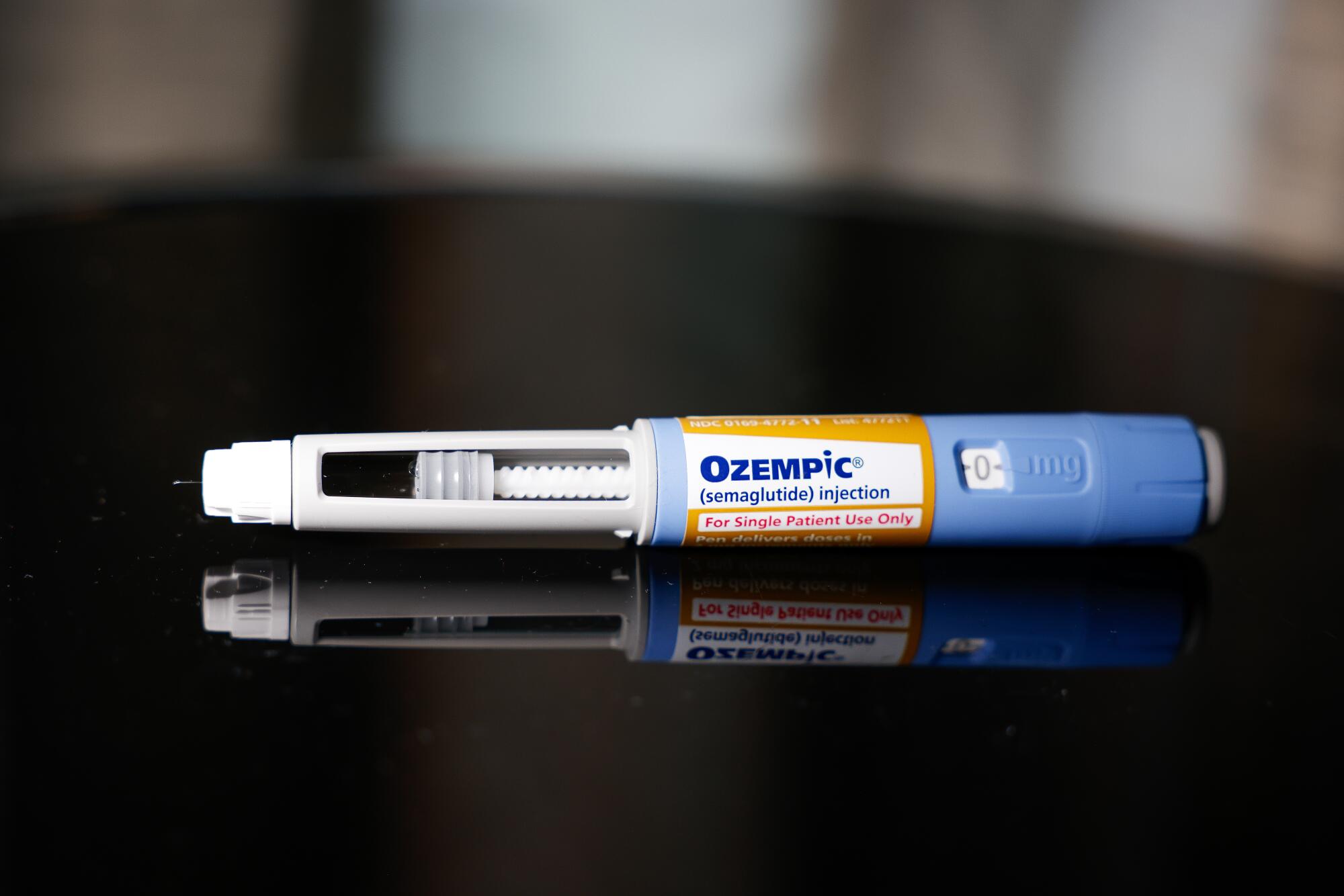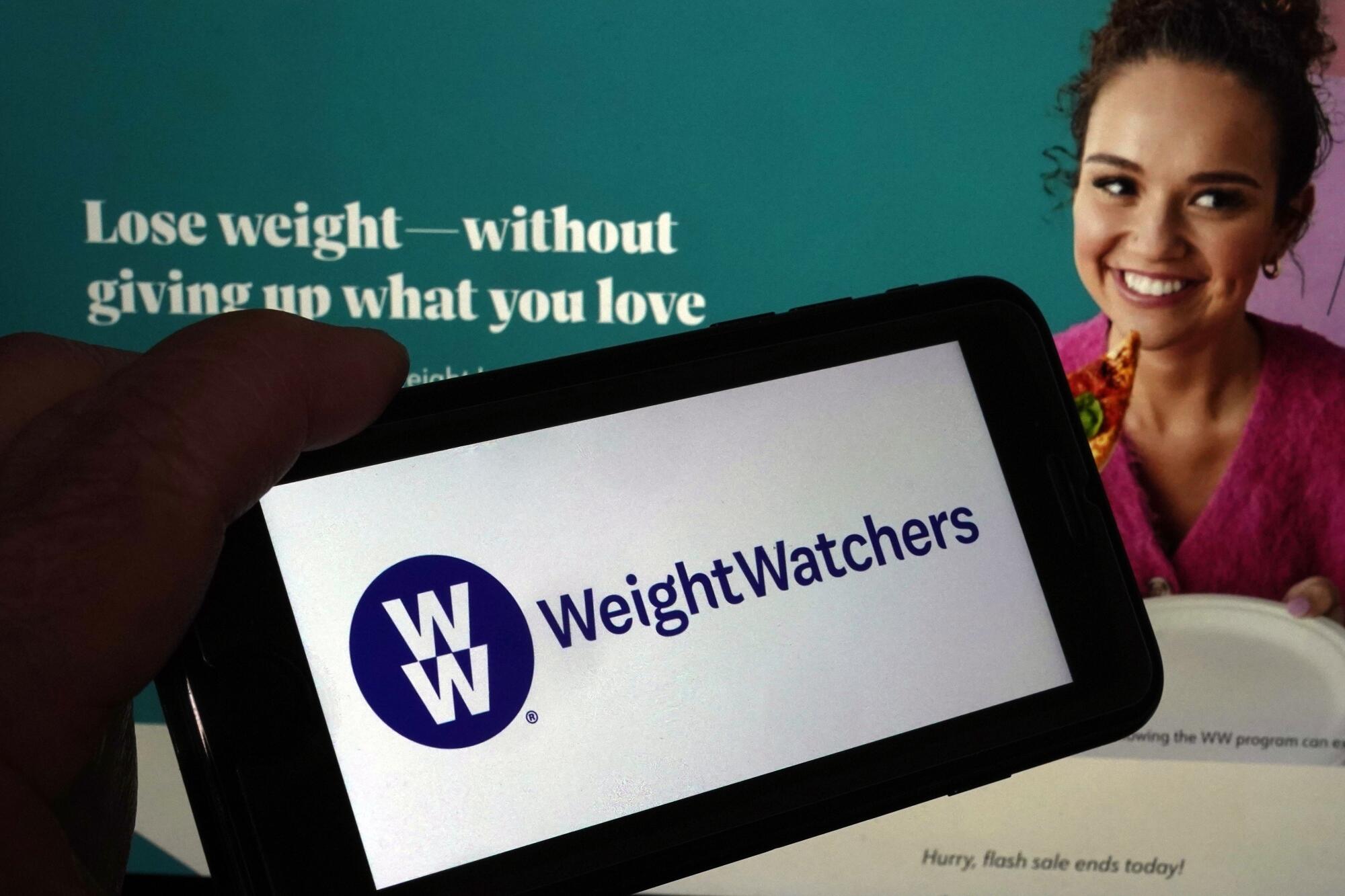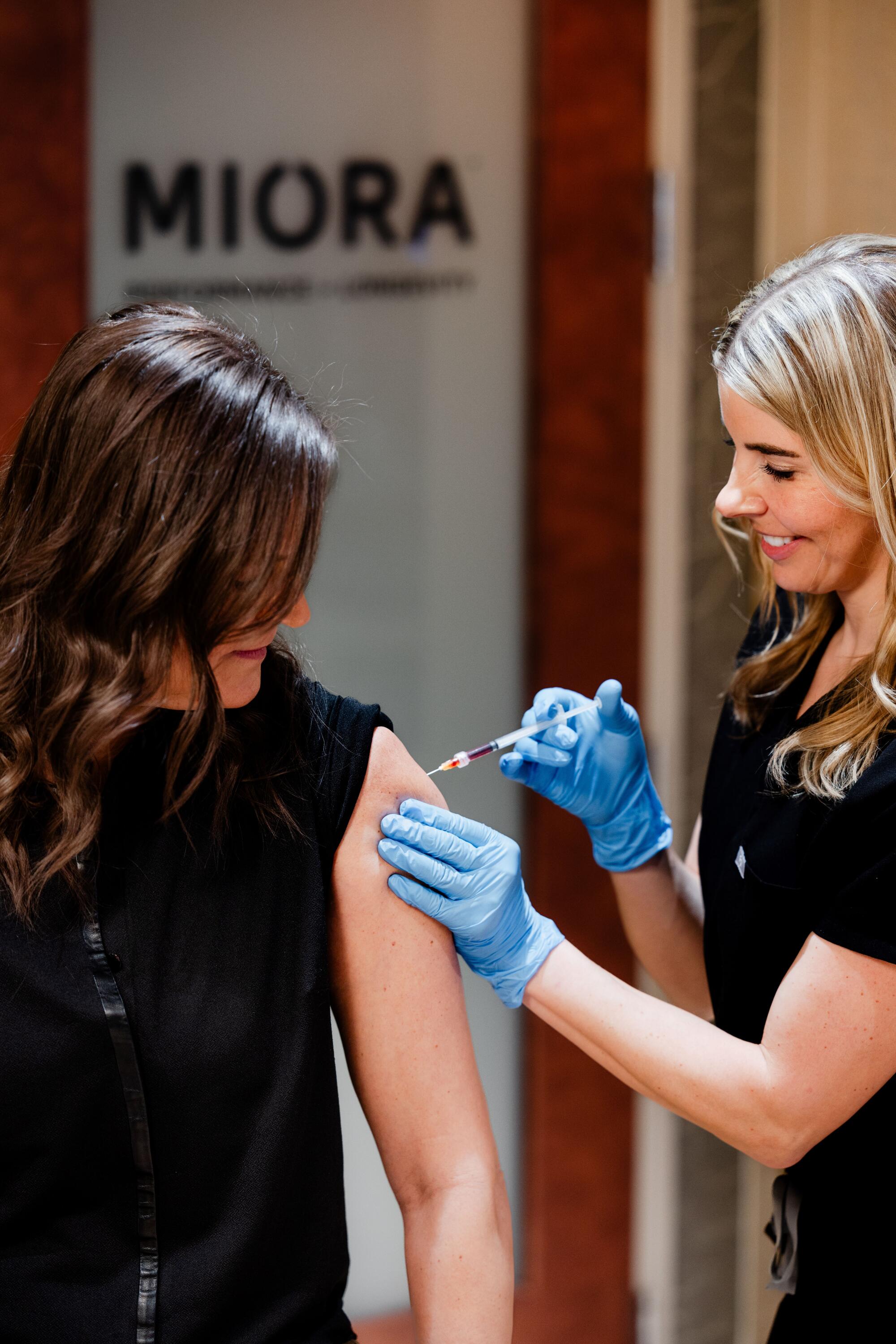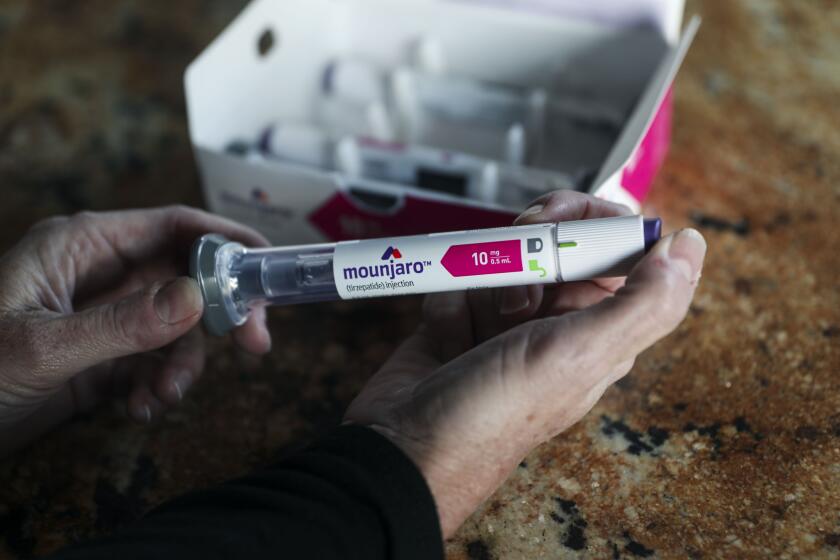
- Share via
Before he began taking Mounjaro last summer, Nick Lovell was the weight-loss economy’s ideal customer.
He signed up for WeightWatchers and bought “Dr. Atkins’ Diet Revolution” to try the low-carb regimen. He joined his first gym in middle school and has belonged to half a dozen others since. He paid for personal trainers and boutique fitness classes and underwent bariatric surgery in 2008. And yet, his 5-foot-9-inch frame stubbornly held onto its 258 pounds.
All told, Lovell, a photographer from Norwalk, Conn., spent tens of thousands of dollars over the decades on “things that ultimately failed.”
Weekly injections of Mounjaro, a prescription diabetes medication that spurs weight loss, changed everything. Down 80 pounds in 13 months, Lovell has canceled his diet program memberships and no longer belongs to a gym, preferring to exercise on his own at home. He goes out to eat less often. His cravings for ultra-processed foods such as cereal and Velveeta have subsided, and now he buys more fruits and vegetables and high-protein options such as chicken thighs, eggs and cottage cheese instead.
In the first head-to-head comparison of two blockbuster drugs, patients taking Mounjaro lost more weight than those taking Ozempic.
Lovell’s experience with the medication is one of countless success stories to emerge amid a monumental shift in the way people lose weight — and, consequently, how they live and spend.
So far, the powerful new anti-diabetes and anti-obesity drugs — a fast-growing family that also includes Ozempic, Wegovy, Saxenda, Zepbound and dozens more in the works — have been expensive and difficult to obtain because of widespread shortages. But as availability increases and costs come down, GLP-1 medications threaten to upend the long-standing natural order for industries across the board.
Executives and investors are nervously wondering whether droves of slimmed-down users will soon ditch their dieticians, skip the gym, order less at restaurants, and throw out their favorite snack brands. Many companies, acknowledging that the blockbuster class of drugs are a medical breakthrough and not just a fad, are swiftly repositioning themselves with new products and services in a bid to persuade customers that they still have plenty to offer in the booming age of Ozempic.

“We had to up our game,” said Dr. Gary Foster, chief scientific officer at WeightWatchers. “A lot of people said, ‘Was it an existential crisis for you?’ Absolutely not. When science evolves, we evolve. What we have to do as a brand is think about how we incorporate that.”
The changes to consumer behavior have already had far-reaching ramifications. Apparel retailers say they’ve noticed customers buying smaller sizes. Plastic surgeons are reporting a rise in facelifts and other procedures to correct so-called Ozempic face, the sagging skin that often accompanies rapid weight loss. In February, Lars Fruergaard Jorgensen, the chief executive of Ozempic maker Novo Nordisk, said food company leaders had called him because they were “scared.”
“The question is, how widespread is Ozempic going to become?” said Simeon Siegel, an analyst at BMO Capital Markets. “As it grows, so too will its impact.”
Patients taking Ozempic and other trendy injectables are going under the knife to correct the side effects of rapid weight loss, which include sagging skin, hollow cheeks and an aged appearance.
With studies predicting that the market for GLP-1 drugs — which help manage blood sugar levels, slow digestion and reduce appetite — will exceed $100 billion by 2030, businesses aren’t waiting around.
In November, WeightWatchers began offering the prescription medications through its WeightWatchers Clinic, which charges $99 per month for access (the cost of the drugs is separate). Foster said tens of thousands of people have since been prescribed GLP-1s directly from the company’s doctors.
It also introduced the WeightWatchers GLP-1 program, designed for members taking the drugs regardless of where they got them. The program aims to help users develop healthy lifestyle habits by teaching them about nutrition, meal timing, proper protein and hydration intake and the importance of a consistent exercise routine.

“These medications are not total fixes,” Foster said. “It’s a misnomer to say, ‘Oh, it’s the easy way out.’ When you do need biological treatments, you also need behavior treatments to be successful.”
The pitch is that health is a long-term commitment that is about more than just a smaller number on the scale. On its GLP-1 program page online, WeightWatchers says it is “your companion on your medical weight-loss journey.”
We had to up our game. A lot of people said, ‘Was it an existential crisis for you?’ Absolutely not. When science evolves, we evolve. What we have to do as a brand is think about how we incorporate that.
— Dr. Gary Foster, chief scientific officer at WeightWatchers
Atkins, a WeightWatchers rival, also wants a bite of the lucrative market and has adopted similar language: We’re “your ally in a new era of weight loss,” the low-carb diet program says on a dedicated GLP-1 page on its website.
“The new weight-loss medications have changed EVERYTHING. We’re actually thrilled at what lies ahead.”
With many GLP-1 users reporting muscle loss as a side effect, Atkins is pushing its line of high-protein bars and shakes, “a deliciously easy way to meet your protein requirements to help you maintain lean muscle mass and bone health while you’re losing weight.”
Two months ago, Nestlé, the world’s largest food and beverage company, introduced Vital Pursuit, a line of frozen foods that the company said is “intended to be a companion for GLP-1 weight-loss medication users and consumers focused on weight management.” The Swiss-based giant cited research from J.P. Morgan that predicted that GLP-1 users in the U.S. could reach 30 million by 2030 — or around 9% of the country’s population.

“As the use of medications to support weight loss continues to rise, we see an opportunity to serve those consumers,” Steve Presley, chief executive of Nestlé North America, said in a statement. By tapping into the emerging category with its new high-protein pasta bowls and sandwich melts, the food giant is trying to “stay ahead of the trends.”
Abbott, the company behind Ensure and Pedialyte, in January introduced Protality, a line of chocolate and vanilla shakes with 30 grams of protein that “provides nutritional support for adults pursuing weight loss.”
“We’re serving a new group of people who may be at a higher nutritional risk because they may be overweight or have obesity and use weight-loss medications,’’ Hakim Bouzamondo, Abbott’s division vice president of nutrition research and development, said in a statement. The shakes are now sold at stores including CVS and Walmart.
I’m pretty cynical about companies getting into this space now. It seems opportunistic. This is a huge phenomenon, there’s obviously money to be made in it.
— Nick Lovell, a Mounjaro user

Gyms, too, are pivoting to retain clients who are now taking the drugs — and to attract people who might have felt too self-conscious to sign up for a membership before.
Although it might seem counterintuitive, “I think [Ozempic] brings new people in,” said Siegel, the analyst who tracks big-box fitness chains.
“When an ‘unfit’ person becomes a fit person,” he said, “more often than not those are the people that become the workout fanatics.”
Luxury health club chain Life Time is trying a multi-pronged approach to appeal to GLP-1 users.
Providing GLP-1 drugs to 19.7 million Medicare beneficiaries with obesity would cost $268 billion a year, researchers estimate in a recent study.
In November the company launched Miora, a wellness clinic located inside one of its athletic clubs in Minneapolis. The clinic offers GLP-1 drugs as well as a host of longevity and performance amenities such as IV therapy and creates personalized programs for members based on their bloodwork and other tests.
Currently in pilot mode, Miora will roll out to Life Time’s other major markets in the coming months, including Southern California.

In the meantime, the company has created a GLP-1 personal training program for its team of 3,500 fitness trainers, meant to help them understand the specific challenges faced by weight-loss-drug users and tailor their sessions accordingly. That could mean incorporating more strength and resistance training to combat muscle loss or helping prevent weight gain when a member stops taking the drugs or lowers the dosage.
“If we were just to get a fraction [of our potential member base] to engage in the way that we do things differently with GLP-1s — it’s an insane opportunity for the company,” said Cliff Edberg, senior director of Miora.
Personal trainers at Equinox and at Gold’s Gym SoCal locations have received similar GLP-1-focused instruction.
The question is, how widespread is Ozempic going to become? As it grows, so too will its impact.
— Simeon Siegel, an analyst at BMO Capital Markets
“We’re ready and waiting to assist clients using GLP-1 drugs,” said Mike Mitchell, vice president of fitness for Gold’s Gym SoCal.
To monitor the effect of the medications on lean body mass — the difference between a person’s total weight and body fat weight — the franchise group is recommending that members get regular comprehensive body composition scans at one of its 23 locations.
“Supporting individuals who are taking GLP-1 medications requires a nuanced approach,” Mitchell said. “Our role involves providing empathetic and personalized behavior-change coaching.”

As groundbreaking weight-loss drugs reshape the consumer landscape, the difficulty for brands will be positioning themselves as authentic partners to GLP-1 users.
“I’m pretty cynical about companies getting into this space now,” said Lovell, the Mounjaro user. “It seems opportunistic. This is a huge phenomenon, there’s obviously money to be made in it. The major conglomerates come across to me more as just protecting their bottom line.”
To make it feel like less of a “money grab,” he said he’d like to see companies immerse themselves in the growing GLP-1 community and get to know their target customers.
“Otherwise, it’s Marie Antoinette: Let them eat cake — or let them eat protein bars, in this case.”
More to Read
Inside the business of entertainment
The Wide Shot brings you news, analysis and insights on everything from streaming wars to production — and what it all means for the future.
You may occasionally receive promotional content from the Los Angeles Times.














